Everything alive has a ripening point, including you and me. Every animal, plant, human, fungus, and alien starts life out in an infancy state, matures, and eventually dies. Cannabis is no exception. Understanding the glandular and non-glandular trichomes of cannabis is important so we can maximize and uplift the experience, the medicine, and the industry as a whole.
When I teach about trichome ripeness, I use an analogy of a banana’s three-stage ripening points. It’s easy to understand and see the ripening of a banana the way it is for cannabis trichomes since both have three distinct color indicators. Let’s cover the simplicity of trichome ripeness and back it up with a leading research scientist weighing in on the subject matter.
Premature Ripening
As the fruit body of a banana develops, its green color indicates the fruit has not yet reached its ripening stage. No one eats green bananas; they aren’t ready yet. Similarly, a cannabis trichome must develop its core shape and structure before it can begin to ripen with chemistry. The premature trichome develops looking like clear glassy structures, preparing themselves for accelerated chemical production they are about to build and house. They have some basic chemical elements at this stage of life that will fruit into more complex compounds that will build off each other. For example, it’s reported cannabinoids develop from terpenes even though scientists aren’t sure which terpene kicks off the precursor cannabinoid CBG, which then builds other cannabinoids from it such as THC and CBD.
Photos by @Zoom_Gardens
Ripe
Once the body of a banana or glandular trichome is fully formed, it switches gears and begins a new and more complex stage of life. For cannabis, the glandular heads undergo a complicated process utilizing DNA, available nutrients, and photosynthesis to build up to 500 individual organic compounds found throughout the plant! These include cannabinoids, terpenes, flavonoids, esters, ketones, polyphenols, thiols, alcohols, and more which primarily come from the trichomes. Day by day, you can physically see the chemistry build and fill the glands. The accumulated chemistry produces a fog in the trichome heads that becomes milkier in color as the chemistry increases.
I teach people to harvest cannabis at peak ripeness between the ripening apex and degradation. If you are getting closer and closer to the degrading state, you know you have reached the maximum ripening stage. So, wait till your yellow banana has some dark spots developing; you know it’s sweeter since the sugar has had more time to increase. Same thing for THC…
Photos by @Zoom_Gardens
Overripe
For us long-term growers and experimenters, we can assure if you do not harvest at the apex of ripeness and keep the plant going, the trichomes will begin to turn orangish-amber in color. And like a degrading brown banana begins to wrinkle and whither, so do glandular trichomes. They become old, orange, and some even become dimpled or wrinkly while their internal mechanics start to fail and change. The only wrinkled or depressed glandular heads we see are on some samples of over-ripened cannabis, and typically only a handful of the amber trichomes are observed with this level of degradation.
The Science
I’ve read through numerous peer-reviewed articles on cannabis trichome development, and shockingly, there were few regarding trichome color and ripeness. There are articles written on cannabinoid development over the lifespan of glandular trichomes, suggesting peak ripeness chemically, but not color. So I emailed Paul Mahlberg, who has studied cannabis trichomes for 30+ years, and inquired about the accuracy of a color-based trichome ripeness assessment.
Here’s that email communication:
Max Montrose Nov 23, 2016
Dear Mr. Mahlberg, It’s been a few months since we last spoke and I hope you are well.
I’ve been digging through your research articles feverishly looking for science on Glandular Trichome Ripeness. There are many passionate enthusiasts and educators who disagree with me when I claim trichomes are pre-ripe when clear, most ripe when milky, and post-ripe when turning orangish/amber. The biggest disagreement is that trichomes start to degrade cannabinoids and terpenes when the gland becomes amber. Last time we spoke on the phone you confirmed it’s true the glands begin degradation at the amber stage. People are arguing that the gland is at its peak ripeness when turning amber instead of milky, which I disagree with.
Can you please help me locate some substantial science on Trichome Ripeness? Pre-ripe, most-ripe, and post-ripe?
Thanks very much,
Max
Paul Mahlberg Nov 27, 2016
Hello Max:
Thanks for your inquiry on glands. You have excellent photos of glands! And at a good magnification so as to observe differences during their development. You are correct in that one can divide gland development into stages such as you describe–clear, milky and colored (orange/amber). The colored stage (amber/orange) is the late stage which goes to senescence (your post-ripe). You also describe them as pre-ripe, most ripe and post-ripe. This is ok–it compares them to developing fruit perhaps.
Color of the contents, as clear, milky or amber/orange, reflect differences in the nature of secretory cavity contents of course. This topic is an interesting (important?) study. The contents must vary during time, as we can see. Certainly, cannabinoids are there, as we have shown with our micro-pipet procedure. This is a tedious procedure requiring special equipment; it took me a few years and considerable expense to acquire them. But it’s fascinating in that one can penetrate into a single gland with specially made glass microneedle and extract the contents of that single gland. We then analyzed it with our gas chromatograph for cannabinoids, as I described. Because we had standards of several cannabinoids (THC, CBD, CBN, CBG, CBC) in our chromatograph, we could identify those present in the gland content. We could measure the quantity from a single gland! We found only those reported–not all 5 of them. This is interesting because of these cannabinoids, only CBC is colored (orangish). But we did not detect CBC. But, the color may be related to some other material that forms in the gland at this stage in development.
There are other substances in the glands in addition to cannabinoids. Such as the terpenes, but at the time we were not studying terpenes, or other substances. Later, like 10 years, my then student, Dr. Hillig, and I began to examine terpenes in numerous varies . It took a very long time (a year) to accumulate our library of terpenes for study. We have a few papers on this topic (but not directed specifically to glands). It’s a similar procedure and equipment used to transfer nuclei from cell to cell, etc. To study terpenes in individual glands will require again setting up the micromanipulation procedure to isolate gland content. Or more grossly, you can develop a procedure (instrument) for picking individual glands, of different ages, off the plant with special ‘forceps’ and analyzing them in an instrument containing the terpene library (perhaps 40 terpenes in the program) so as to obtain the terpene profile of that gland, or perhaps a number of such glands of the same ‘age’. You can visual that this plan would take a lot of work, costly for the equipment and supplies required, and a lot of patience and work. But it could be done. Is there a simpler way to do it? Yessss, depends on what you want to accomplish. But we have to have an analytical instrument that contains the terpene program, or cannabinoid program, or proteins, or whatever you want to examine from isolated contents of the secretory cavity. Of course, one could develop other techniques to isolate glands in quantity, and begin from that point.
It is now most interesting that there are so many varieties of Cannabis what with all the compounds they produce. And these varieties produce such an abundance of glands, as you show in your photographs, that they can be accumulated in quantity for study. Techniques to isolate these glands can be developed so as to analyze a variety of topics.
Your studies and ideas about glands are most interesting. I hope my comments are helpful.
Paul Mahlberg
Conclusion
Cannabis undoubtedly has ripening stages—it must—and it’s incredible we can measure it anatomically, chemically, and visually. Yet, the ideal ripeness of flower depends on its use and the goal of the final product. Most hash makers prefer a terpene and cannabinoid profile of amber trichomes, as well as the sticky and oily nature of them. Some chemistry-focused operations may be more interested in less ripe trichomes if they are aiming to harvest CBG over THC from the plant. However, as interpeners who are looking for the best smokable flower, milky trichomes that are nearing the amber stage are what I recommend.
By Max Montrose / Trichome Institute
Photography by @Zoom_Gardens
@Max.Montrose @Trichome.Institute @Interpening
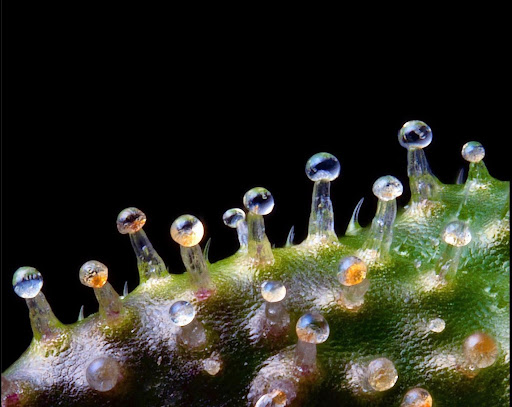
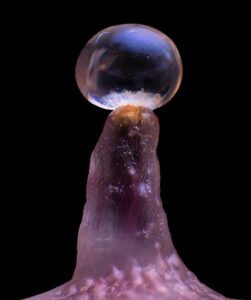
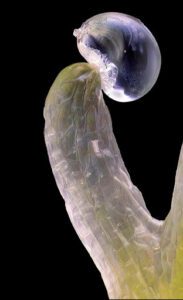
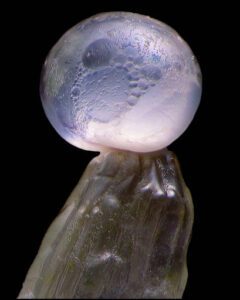
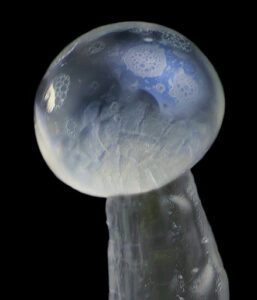
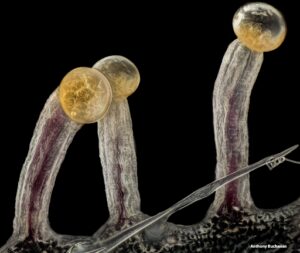
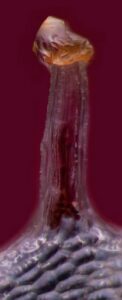
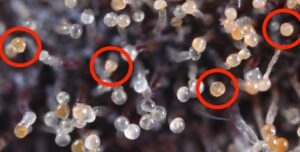

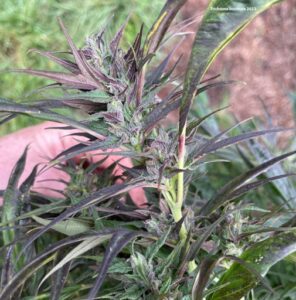

2 thoughts on “Evaluating Cannabis Trichome Ripeness”
My issue is that one branch on a plant may have lots of amber trichomes and another branch has cloudy and another branch on the same plant has mostly clear trichomes. When do you harvest that plant? I have cut branches off when amber while leaving the cloudy and clear branches. I am growing for personal use and wondering the best time to harvest the entire plant or just cut the cloudy/ amber branches. Any thoughts would be appreciated from a growers view vs purchaser.
Solid question! For personal use, I feel like node-by-node makes sense because you can dial it in on a more precise level. That said, I don’t know what effect that may have on the remaining branches, and I’m unsure how “scalable” that is for anything other than a small, personal grow. Would love more insight from the team @trichome @MaxMontrose @brandonallen